At the border of two environments. The evolution of promising submarines in conditions of increased probability of their detection by the enemy
Under these conditions, the solution to the problem of stealth and combat stability of submarines is possible only at the tactical and operational levels. In many cases, today the most effective way to restore the secrecy of a detected submarine will be tactical - to “kill” the carrier of anti-submarine means “who took contact” with it.
Submarine Stealth
Improving the acoustic and non-acoustic methods for detecting submarines (PL), as well as increasing the number of sensors placed on manned and unmanned aircraft, surface and underwater platforms, can lead to the fact that the main advantage of the submarine - stealth, will be largely leveled. Despite the fact that at the same time there is a decrease in submarine noise down to the natural background level, the complex use of active low-frequency illumination, magnetometric detection methods, optical scanners with laser illumination, thermal trace detection and radar measurement of the rise of a water column can lead to the possibility of underwater detection enemy boats will increase significantly.

Sea Hunter (2 "Sea hunter") - a pilot unmanned vessel of the US Navy, designed to search and escort submarines
The problem is that a submarine, especially a nuclear one, is a rather large object that will somehow affect the environment. It is likely that over time, active countermeasures will be widely introduced - acoustic phase suppressors operating in antiphase, coatings based on metamaterials that have specific controlled properties for the absorption or re-reflection of sound waves, a body made of composite materials, but this is a matter of the distant future. In the case of water displacement, the only way to reduce the probability of detection is to reduce the size of the submarine.
The dimensions of nuclear submarines (NPS) are largely dictated by the dimensions of their power plant. In addition, the size of the submarine is affected by the level of automation, which reduces the number of crew, and the presence of weapons, the stock of which largely determines the effectiveness of the submarine. After all, a submarine is not a plane, and cannot quickly return to the base to replenish the ammunition, and reloading the ammunition outside the base is not always possible and unmasks the submarine as much as possible. In other words, even according to the most optimistic forecasts, the displacement of atomic and non-nuclear submarines will still be thousands of tons.
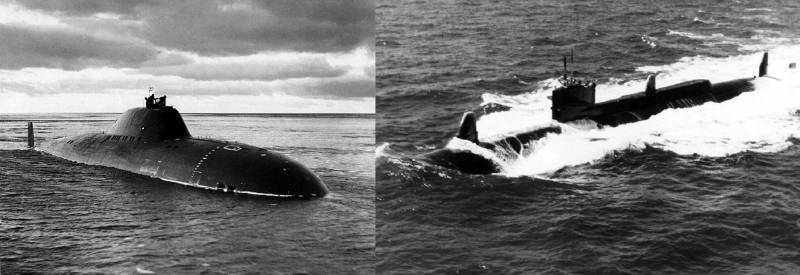
One of the most compact nuclear submarines (on the left) is the Soviet submarine of project 705 (K) Lira with a liquid metal reactor and maximum automation, which reduced the crew to 32 people with an underwater displacement of 3180 tons. On the right is the American Tallibi nuclear submarine (SSN-597) with an underwater displacement of 2607 tons, 66 of which the crew, apparently, were packed like herring in a barrel
We can agree with the conclusion of Maxim Klimov, stated at the beginning of the article, that in some cases the restoration of stealth of submarines is possible only by destroying the platform that detected the submarine - an anti-submarine aircraft, ship or submarine.
Given that the probability of detecting submarines can significantly increase, promising submarines should become a much more aggressive and multi-functional fighter, capable of striking at all types of anti-submarine weapons of the enemy.
Modern multi-purpose submarines can effectively fight their own kind, as well as surface ships, but with an air adversary everything is much sadder. On the submarine there are portable anti-aircraft missile systems designed to destroy air targets from surface damage. But when the submarine is under water, it is defenseless against airplanes and helicopter submarines and can only rely on secrecy, which in the context of the development of integrated anti-submarine detection systems can no longer be considered sufficient.
Submarine Air Defense
The need to equip submarines with anti-aircraft missile systems (SAM), capable of functioning from under water, and to provide submarines with the possibility of hitting enemy aircraft, was repeatedly considered. You can recall the concepts and prototypes of air defense systems for submarines given in the article mentioned at the beginning of the article by Captain 3 rank reserves Maxim Klimov ("Do I need submarine defense submarine?") Also developed, developed and promising air defense systems for submarines, possible design solutions and concepts for the use of air defense systems were considered in the articles of the author: “Atomic multifunctional submarine cruiser: an asymmetrical response to the West” и “Nuclear-powered multifunctional submarine cruiser: a paradigm shift”.
If we talk about air defense systems only as a means of self-defense of submarines, it is necessary to take into account the specifics of anti-submarine aviation - these are subsonic, low-maneuverable and mainly low-flying targets, such as the American Boeing P-8 Poseidon PLO aircraft or Sikorsky SH-60 Seahawk PLO helicopter. Relative to a high-altitude target, the U.S. Navy Northrop Grumman MQ-4C Triton long-range reconnaissance UAV can be considered a target, but its ability to search for submarines is limited, and a maximum flight altitude of 17 meters is not a problem for modern air defense systems.

The main objectives of the submarine air defense system are the Boeing P-8 Poseidon anti-aircraft aircraft, the Sikorsky SH-60 Seahawk anti-aircraft helicopter, and the US Navy Northrop Grumman MQ-4C Triton long-range reconnaissance UAV
Based on the tactical and technical characteristics of aviation threats to submarines, it can be assumed that a promising air defense system for submarines (air defense missile systems) can be developed on the basis of the Poliment / Redut naval air defense system, which, in turn, was created on the basis of the latest ground-based air defense system S-350 The Knight.
The advantage of the Poliment / Redut / S-350 Vityaz air defense system is the presence of medium-range anti-aircraft guided missiles (SAM) 9M96E, 9M96E2 with an active homing radar (ARLGSN) and 9M100 short-range missiles with an infrared homing head (IKGSN) capable of hitting targets without continuous targeting or highlighting the SAM targets.
In articles “Atomic multifunctional submarine cruiser: an asymmetrical response to the West” и “Nuclear-powered multifunctional submarine cruiser: a paradigm shift” It was proposed to place a full-sized radar station (radar) on a separate mast extended from a periscope position. But the strategic missile submarine cruiser (SSBN) of project Borey, project 955A, on which there is sufficient space to accommodate the radar mast, was considered as the basis for the creation of the nuclear multifunctional submarine cruiser (AMFPK). Despite criticism, the author is confident that a retractable radar can be implemented, just look at much bolder projects, for example, deploying retractable artillery on American nuclear-powered ballistic missile submarines (SSBNs) "Ohio".

Installation of a 155 mm vertical gun in the Ohio SSBN missile silo with the possibility of firing while submerged
Also, a Virginia-type submarine was considering the possibility of installing an additional section of the hull seven and a half meters behind the cabin, including two universal mines with a diameter of just over two meters, which, like the mines of the modernized Ohio missile carriers, could contain Tomahawk cruise missiles ”, Additional cubicles for swimmers, unmanned underwater vehicles (UAVs) and unmanned aerial vehicles (UAVs), a vertical gun or anti-aircraft missile installation on a telescopic mast, including a 25-mm automatic a cannon and / or Stinger air defense system.
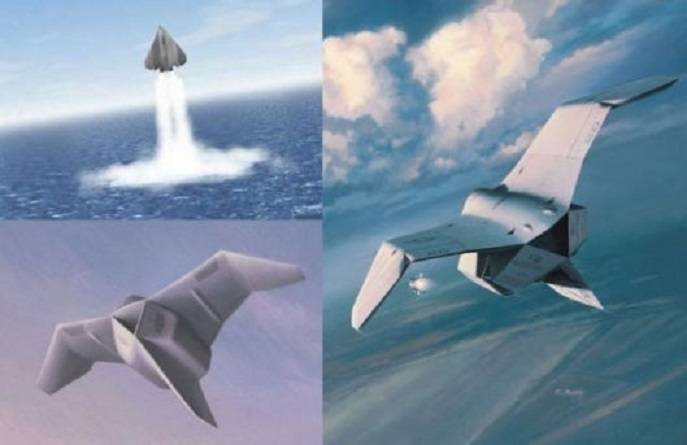
The concept of UAV launched from under water
By the way, a mine with a diameter of two meters is quite suitable for placing intercontinental ballistic missiles on multipurpose nuclear submarines, which was considered in the article “The evolution of the nuclear triad: prospects for the development of the marine component of the strategic nuclear forces of the Russian Federation” as a measure to increase the survival of the marine component of the Russian nuclear triad.
However, it cannot be denied that the development of a radar on a mast pulled out from under the water is a complex engineering task that will require time and additional financial resources. At the same time, the radar is far from the only way to detect air targets.
For primary detection of air targets, information from electronic reconnaissance sensors capable of detecting radar radiation from aircraft and PLO helicopters, as well as acoustic sensors capable of detecting the noise of aircraft engines and PLO helicopters, can be used. The additional search for the target and the issuance of target designation of missiles can be carried out using the optical and thermal imaging channels of the periscope operating in the anti-aircraft mode. In the future, periscopes can be equipped with conformal radars with an active phased array antenna (AFAR).
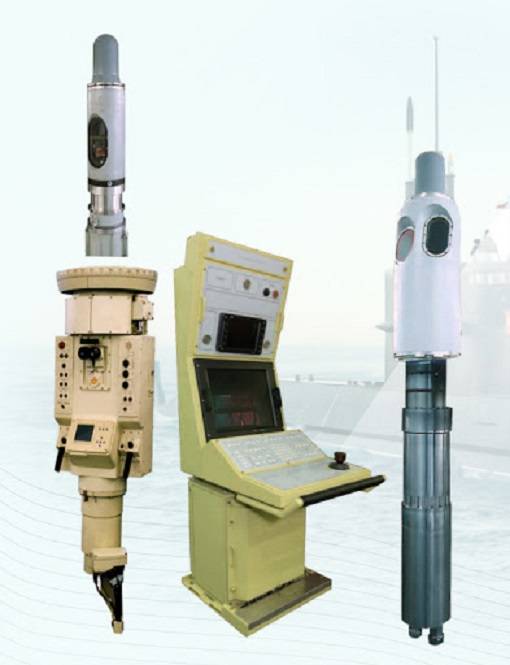
Periscope "SAIL-98"
The “PARUS-98” periscope is intended for installation on modernized and newly developed prospective submarines and provides:
- a circular overview of the drive surface and airspace in the daytime, at dusk and at night, including in difficult weather conditions;
- detection of surface coordinates, air and coastal facilities;
- reception of signals from satellite navigation systems "Glonass" and GPS;
- reception of signals from satellite navigation systems "GLONASS" and "GPS";
— radar detection and other radio equipment.
A prerequisite should be the ability to launch missiles from under the water. The launch of missiles directly from under water can be realized, by analogy with the launch of cruise and anti-ship missiles. In this case, preliminary target designation is entered into the missile control system prior to launch.
Alternatively, an ejection from a mine and the ascent of a missile launcher can be realized in a specialized container connected by cable to the submarine. In this case, the launch of missiles is carried out after surfacing and obtaining target designation, after which the cable of the container is cut off and discarded.
After launching and leaving the water, SAM with the help of ARLGSN or IKGSN carries out additional search, capture and defeat of the target.
Defense and maneuver
The presence of air defense systems alone does not guarantee the safety of submarines. With the initiative, PLO aircraft can strike before the PL detects the enemy. In this case, the submarine should be able to evade the strike or actively counteract it, as well as quickly strike back.
One of the leading trends in the world of weapons is to give military equipment the ability to destroy not only the carrier, but also the direct attacking ammunition. On armored vehicles this is implemented using active defense systems (KAZ), on combat aircraft using air-to-air (B-B) missiles capable of hitting enemy B-B missiles with a direct hit (hit-to-kill).
Similarly, the ability of a submarine to repel enemy fired torpedoes can be realized using anti-torpedoes. In Russia, anti-torpedoes for submarines are developed on the basis of the Package-NK complex for surface ships. Unfortunately, taking into account the significant lag of the Russian Federation in the development and serial production of modern torpedoes, the characteristics of anti-torpedoes also remain in question. I would like to believe that all issues with both torpedoes and anti-torpedoes will be resolved, and the Russian Navy (Navy) will receive a reliable and modern weapon.
Also, as a means of counteracting attacking torpedoes, towed and autonomous false targets - acoustic jammers can be used. An example is the Vist-2 Small-sized Hydroacoustic Countermeasure Device (MGPD), which is launched from the side of a submarine and creates a powerful acoustic jamming that suppresses homing torpedoes and submarine sonars. Also, the “Vist-2” MGPD can work as a false target due to the emission of an acoustic signal simulating a submarine.
- types of hydroacoustic counteraction - interference and / or imitation;
- type of interference - broadband obstructive sighting in frequency;
- type of simulation - the secondary sonar field of the submarine;
- interference emission mode - continuous and pulsed;
- range of radiated frequencies - corresponds to the frequencies of the sounding torpedo packages;
- the radiation field of the signals is circular in the horizontal plane, sector in the vertical plane;
- the range of working depths of the drift is 15-350 m (automatic maintenance of the drift range from the setting horizon is provided);
- working time - 6 minutes;
- the speed of the submarine during the installation of the device - up to 12 knots;
- weight and size characteristics: caliber 123 mm, length 810 mm, weight - 13,5 kg.
An important factor affecting the ability of submarines to deal with both air defense submarines and other types of surface and underwater adversaries will be the maneuverability of promising submarines and their ability to intensively change the depth of immersion. For example, in the event of an aviation attack, a PLO submarine must quickly emerge to the periscope depth from which a search and defeat of the enemy missiles can be carried out.
One of the most maneuverable submarines can be considered the previously mentioned Soviet submarine of project 705 (K), which can be called a "submarine fighter." A unique reactor with a liquid metal coolant allowed Project 705 (K) submarines to accelerate to a speed of 41 knots (76 km / h) for 1-1,5 minutes and rotate 180 degrees in 40-45 seconds. According to submariners, the nuclear submarines of project 705 (K) could unfold almost on the spot, "like a helicopter."
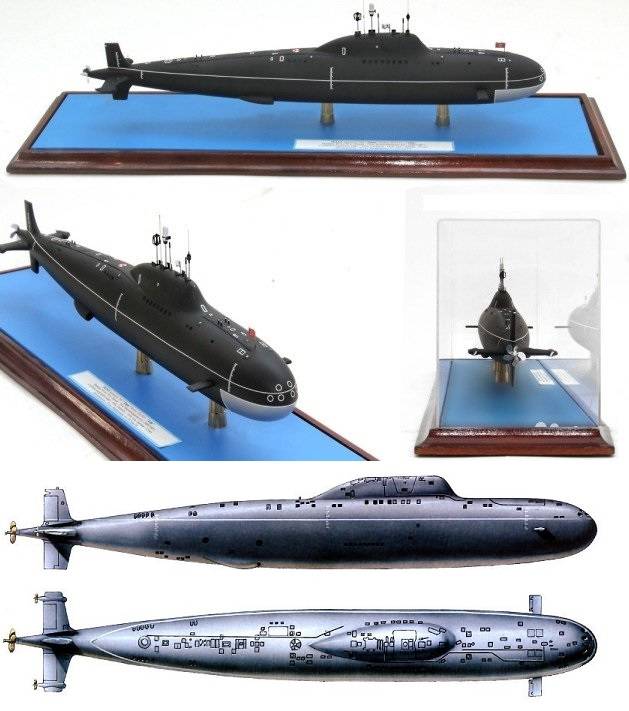
Underwater Fighter - Project 705 (K) Submarine
There is an assumption that the reactor with a liquid metal coolant will be installed on Russian fifth-generation nuclear submarines of the Laika type (Husky project). In this case, it is likely that the maneuverable and running (in terms of acceleration) characteristics of the Laika submarines will be comparable to those of the Project 705 (K) submarines.
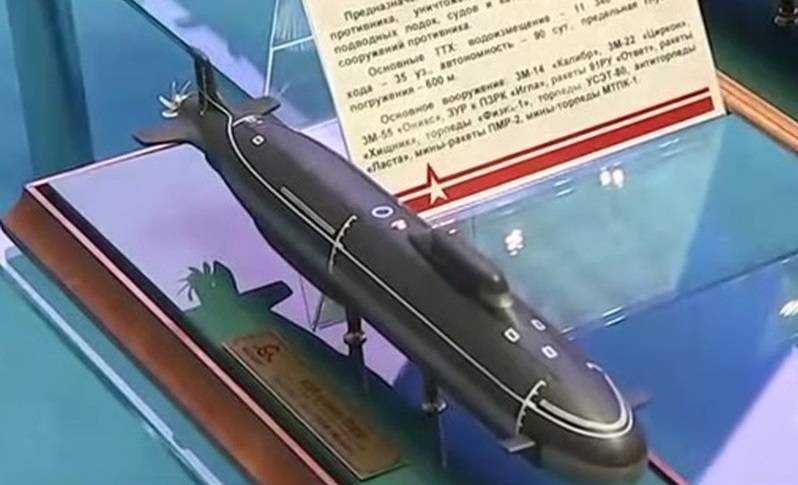
Consequences of the appearance of submarines ability to withstand aircraft PLO
The consequences will be significant. If now PLO aviation can act with impunity - without covering surface ships or submarine aviation, there is nothing to oppose it, then the appearance of anti-aircraft missile systems capable of operating from under water will change the situation by 180 degrees.
The flat surface of the sea does not provide aviation with the opportunity to take refuge behind natural and artificial barriers. The task of finding a submarine requires pilots to withstand certain modes of altitude and speed. PLO aviation itself does not have outstanding speed and maneuverability. In the complex, all of the above will turn planes, helicopters and UAVs PLO into targets.
The appearance of submarine air defense systems will require a comprehensive modernization of airplanes and helicopter submarines or the purchase of completely new models equipped with electronic warfare (EW), laser defense systems and / or anti-missile systems.
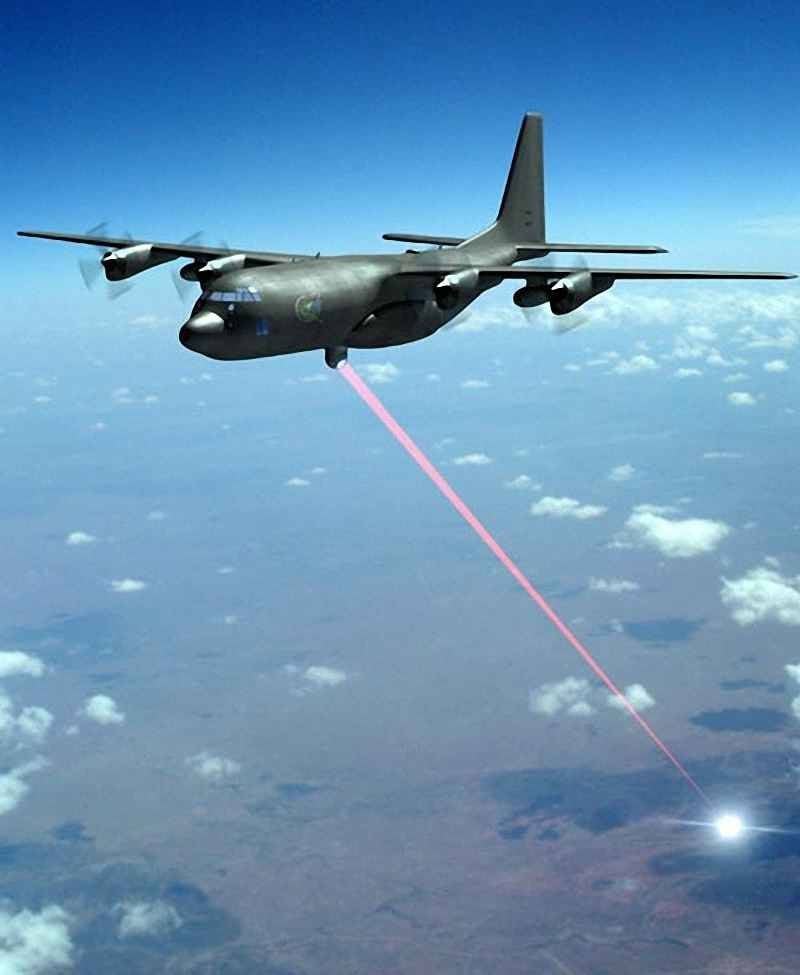
Image of C-130H Hercules with ATL Laser System
All this will lead to higher cost of aircraft PLO, and therefore, to reduce its number or increase the burden on the enemy’s budget. The presence of additional equipment and weapons for self-defense against missiles will lead to a decrease in the ammunition load of anti-submarine weapons, and will reduce the time of patrolling, which together will lead to a general decrease in the effectiveness of air defense aircraft.
The likelihood of suddenly getting missiles "in the belly" will lead to increased psychological impact and stress on the crews of aircraft and helicopter PLO, which also will not contribute to an increase in their efficiency. If the PLO helicopters operate in relative proximity to surface ships, then the PLO planes can operate at a considerable distance from the basing places. Consequently, if the PLO plane is shot down, then the crew will have few chances of survival. In turn, unmanned aircraft and PLO helicopters in the foreseeable future will not be able to replace manned equipment without loss of efficiency.
Aviation PLO can be considered the greatest threat to submarines because of its high mobility, which allows to quickly build up forces and organize patrols of large sections of the water surface.
Conclusions
The creation of an anti-aircraft missile system, designed to equip prospective and modernize existing submarines, capable of operating from under water from a periscope depth of immersion, will significantly increase the survival rate of domestic submarines in terms of quantitative and qualitative superiority of enemy anti-submarine aircraft outside the cover zone of surface ships and aviation Russian Navy.
Allegedly, the best solution could be the creation of the Almaz-Antey aerospace defense group of an anti-aircraft missile complex of submarines on the basis of the Poliment / Redut / S-350 Vityaz air defense system.
The appearance of submarine air defense systems in combination with anti-torpedoes, false targets and increased maneuverability of submarines will make it possible to switch sharply from tactics of maximum stealth to conducting an aggressive, dynamic battle if there is a possibility that the submarine is already detected or can be detected in the near future.
The appearance of submarine air defense systems will dramatically change the balance of forces in the direction of submarines, which will require the enemy to modernize and / or replace the entire aircraft anti-aircraft, as well as increase the proportion of unmanned platforms with obviously less efficiency.
The evolutionary increase in the characteristics of submarine air defense systems will significantly increase the effectiveness of submarines in delivering missile attacks on aircraft carrier attack groups (AAGs) due to the destruction of early warning radars (AWACS) capable of issuing target designation missiles launched by AAG guarding ships using low-altitude anti-ship missiles.
Submarines equipped with air defense systems can carry out raider operations against enemy transport aircraft, disrupting communications, significantly complicating the supply of enemy bases and contingents deployed far from its territory.
In the next article, we will talk about alternative weapon systems that can be used on the border of two environments.
- Andrey Mitrofanov
- otvaga2004.ru, alternathistory.com, elektropribor.spb.ru, bastion-karpenko.ru
- Atomic Multifunctional Submarine Cruiser: Asymmetrical Response to the West
Atomic Multifunctional Submarine Cruiser: Paradigm Shift
Nuclear Reactor for NAPL. Will Poseidon lay Dollezhal's egg?
The sunset of the nuclear triad? Marine component of strategic nuclear forces
The evolution of the nuclear triad: prospects for the development of the marine component of the strategic nuclear forces of the Russian Federation
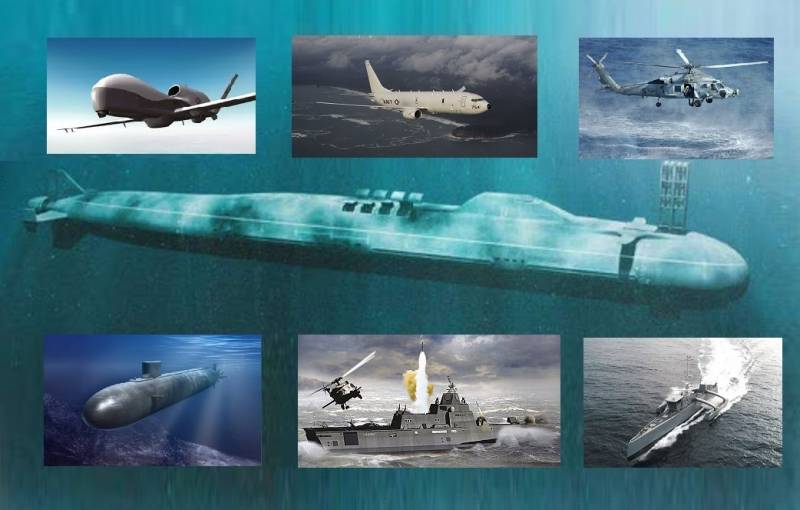
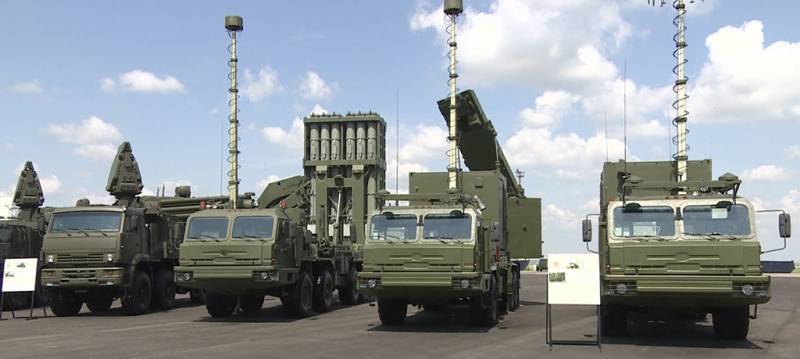
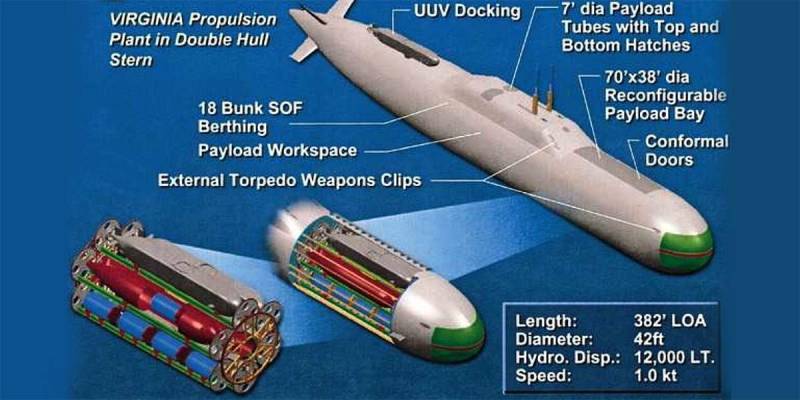
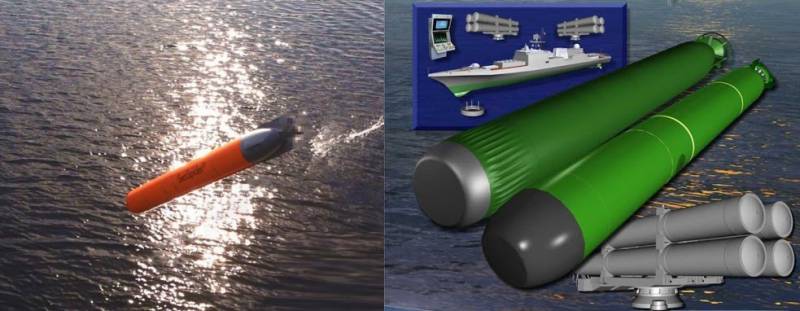
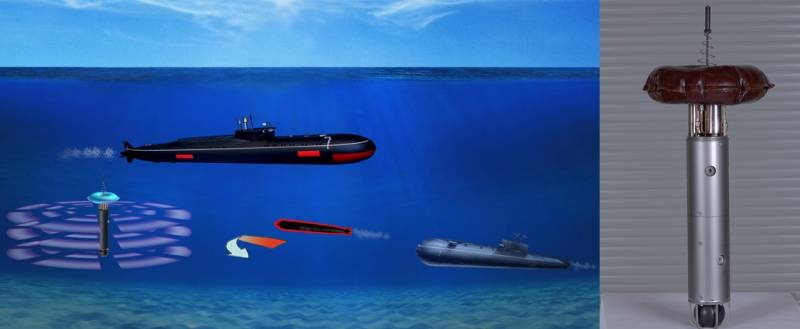
Information